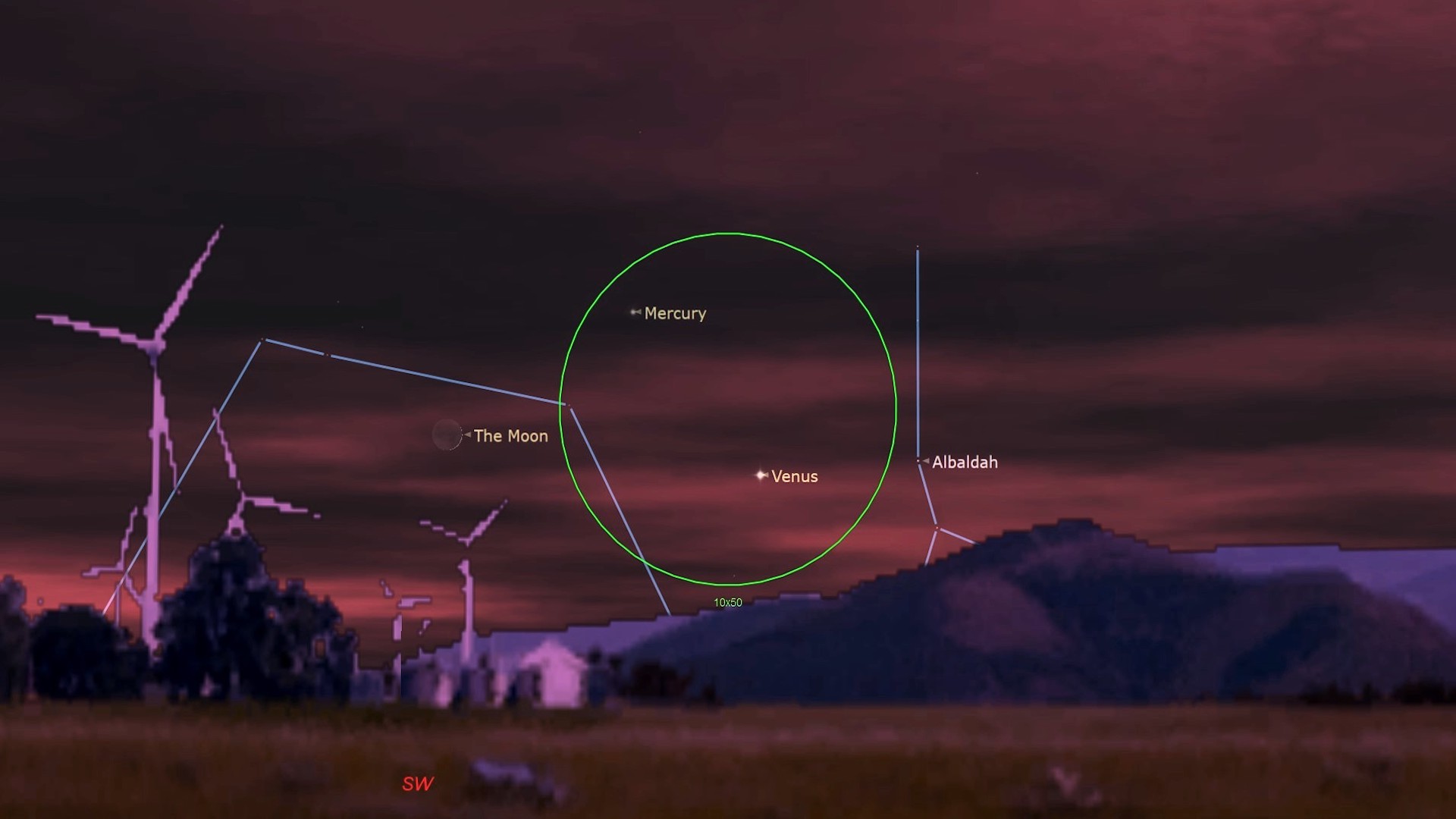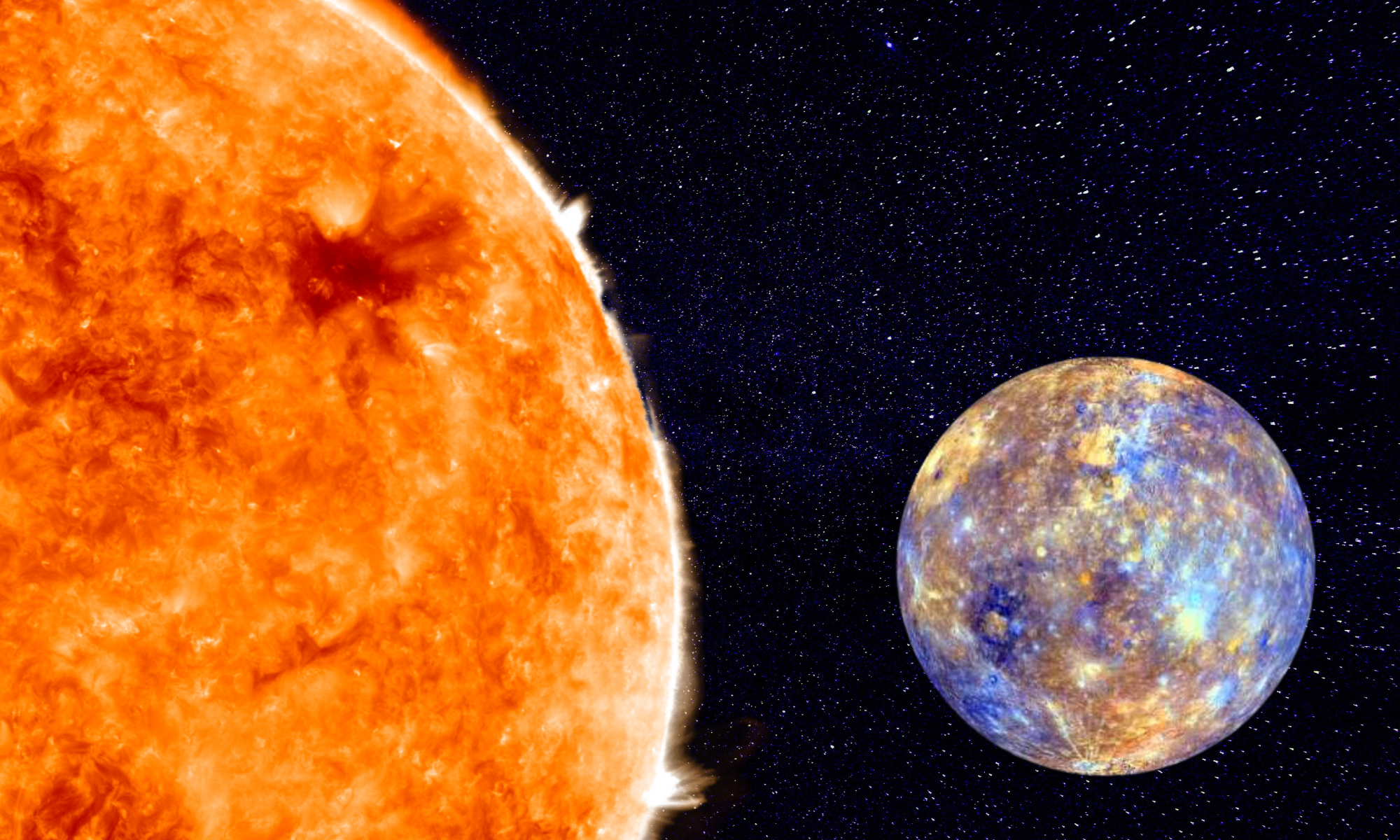See Mercury shine brightly in the sky this Christmas
The closest planet to the sun, Mercury, shines brightly over Christmas as it reaches its highest altitude in the evening sky on Christmas morning.

Santa Claus won't be the only visitor to our night skies this Christmas Eve.
On Christmas Eve (Dec. 24), Mercury will shine brightly in the sky over Earth, reaching its peak altitude above the horizon during sunset on Christmas day before fading from the skies as 2022 progresses into 2023.
Over the two days of Christmas the closest planet to the sun will reach its highest point in the sky during its current winter evening apparition, 12 degrees above the horizon (a little more than one fist's width at arm's distance), while shining with a magnitude of -0.6, according to In the Sky.
Related: Night sky, December 2022: What you can see tonight [maps]
An apparition is a period in time during which an object in the solar system is visible from Earth. Apparitions of Mercury can happen in either the morning or evening skies with this depending on whether the planet is to the east or west of the sun.
When Mercury is to the east it rises and set after the sun and can be seen in the early evening. When it is to the west, on the other hand, it rises and sets before the sun and is seen shortly before sunrise. Current to the east of the sun the ongoing evening apparition of Mercury lasts from Dec. 4 until Jan. 3.
Despite its boost in brightness, Mercury will still be no "Star of Bethlehem" in the evening sky, however. The smallest planet in the solar system will still be a challenge to spot as this apparition isn't one of the most prominent.
Get the Space.com Newsletter
Breaking space news, the latest updates on rocket launches, skywatching events and more!

Additionally, acting sooner rather than later is the best bet to see the planet. This is because Mercury will fade in brightness towards the end of the December-to-January apparition as it passes between and the sun heading towards an arrangement called an inferior conjunction.
During inferior conjunctions, planets have their illuminated sides turned away from Earth. This results in them appearing as thin crescents that are just barely illuminated.

Want to get a better look at Mercury? We recommend the Celestron Astro Fi 102 as the top pick in our best beginner's telescope guide.
Mercury is a planet that can only be seen over Earth during twilight which means that it is difficult to spot during this thin crescent phase. As result, the closest planet to the sun will be easier to spot in the lead-up to Christmas day than in the days following it.
Mercury is usually a tough planet to see because as the sun's closest planetary neighbor it is frequently obscured by the glare of light from the star. The best time to attempt to see Mercury from Earth is therefore during periods at which it is at its furthest from the sun, so-called moments of "greatest elongation."
These periods occur roughly every three to four months and last for a few weeks at a time. Mercury last reached its greatest elongation and thus its furthest separation from the sun during this current apparition on Dec. 21.
Whether you're new to skywatching or have been it at for years, be sure not to miss our guides for the best binoculars and the best telescopes to view Mercury or anything else in the sky. For capturing the best skywatching images you can, we have recommendations for the best cameras for astrophotography and best lenses for astrophotography.
Editor's Note: If you take a great photo of Mercury would like to share it with Space.com's readers, send your photo(s), comments, and your name and location to spacephotos@space.com.
Follow us on Twitter @Spacedotcom or on Facebook.
Join our Space Forums to keep talking space on the latest missions, night sky and more! And if you have a news tip, correction or comment, let us know at: community@space.com.

Robert Lea is a science journalist in the U.K. whose articles have been published in Physics World, New Scientist, Astronomy Magazine, All About Space, Newsweek and ZME Science. He also writes about science communication for Elsevier and the European Journal of Physics. Rob holds a bachelor of science degree in physics and astronomy from the U.K.’s Open University. Follow him on Twitter @sciencef1rst.
-
rod I did not view Mercury and Venus, but I did see the Christmas comet early today.Reply
It was enjoyable view of the Christmas comet early this morning. I was out 0430-0530 EST. Able to view ZTF C/2022 E3 using my 90-mm refractor with TeleVue 32-mm plossl and TeleVue 14-mm Delos eyepieces, 31-71x views. Distinct stubby fan shape tail with coma. The star TYC2040-488-1 about 9 arcminute angular separation from the comet and 8.15 apparent magnitude. Starry Night shows the comet 8.59, Stellarium 1.1 shows 8.59 apparent magnitude. These estimates looked good for brightness of C/2022 E3 ZTF. I received a report on the comet from spaceweather.com yesterday so I tracked it down in Corona Borealis using a Telrad (very easy to locate). A Christmas comet 🙂 Temperature -14C, winds 270/7 knots, clear skies. The wood burning stove is running and felt great when I came back inside. Fired up last night. Weather like this is for running with Big Foot and the wolf pack.









